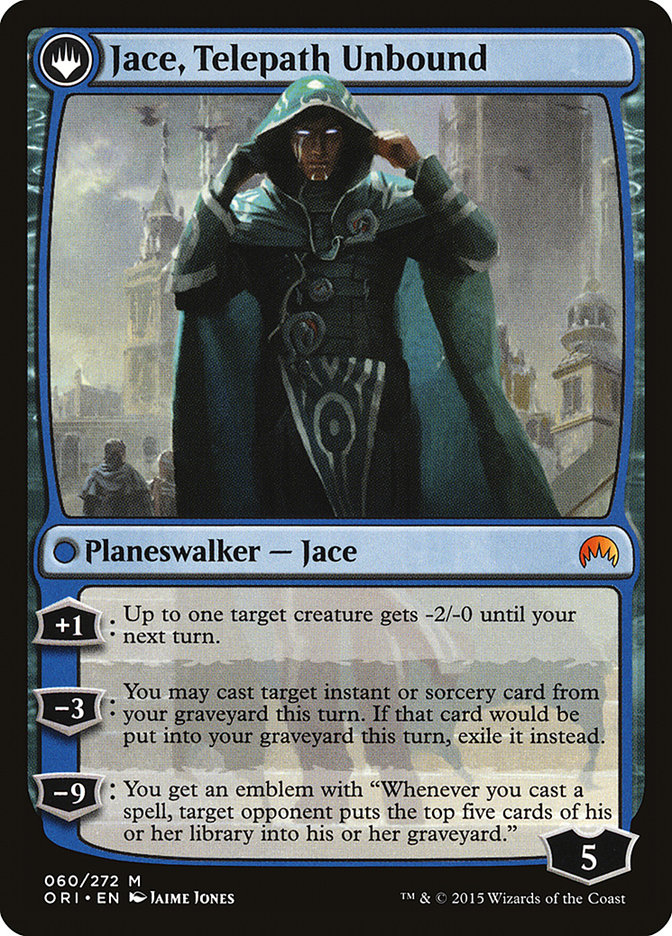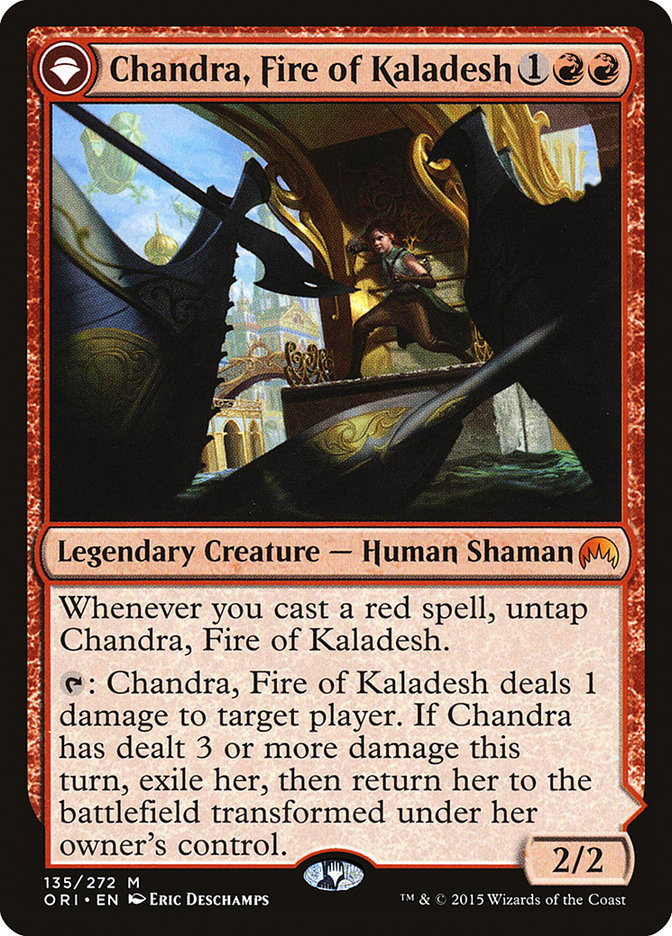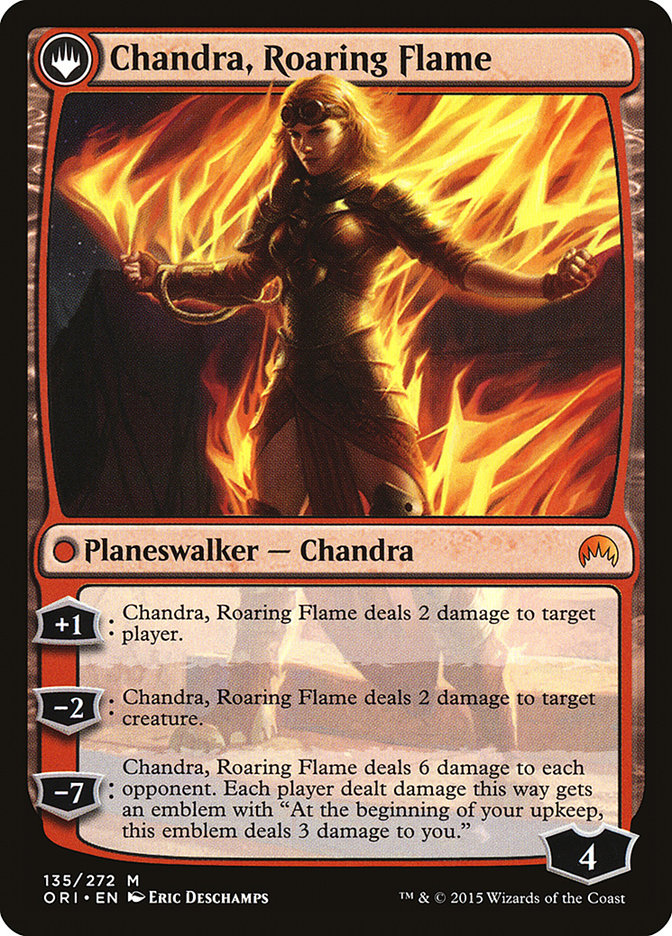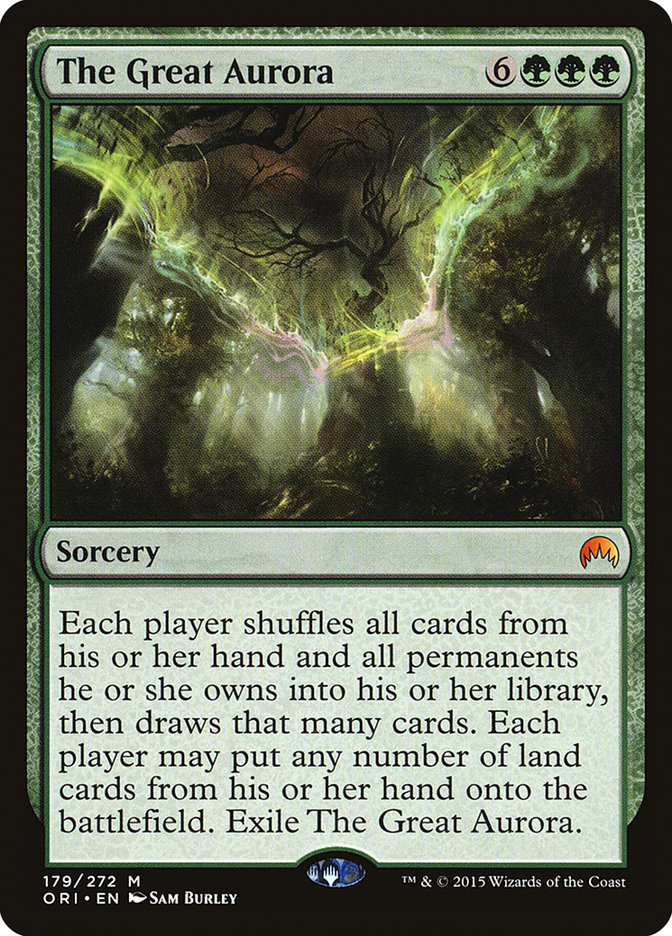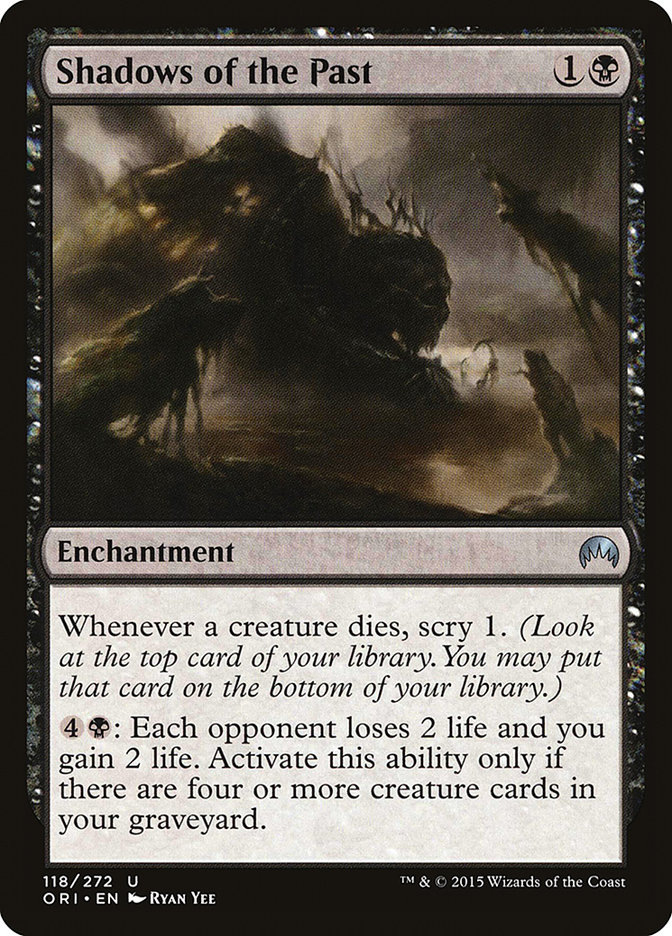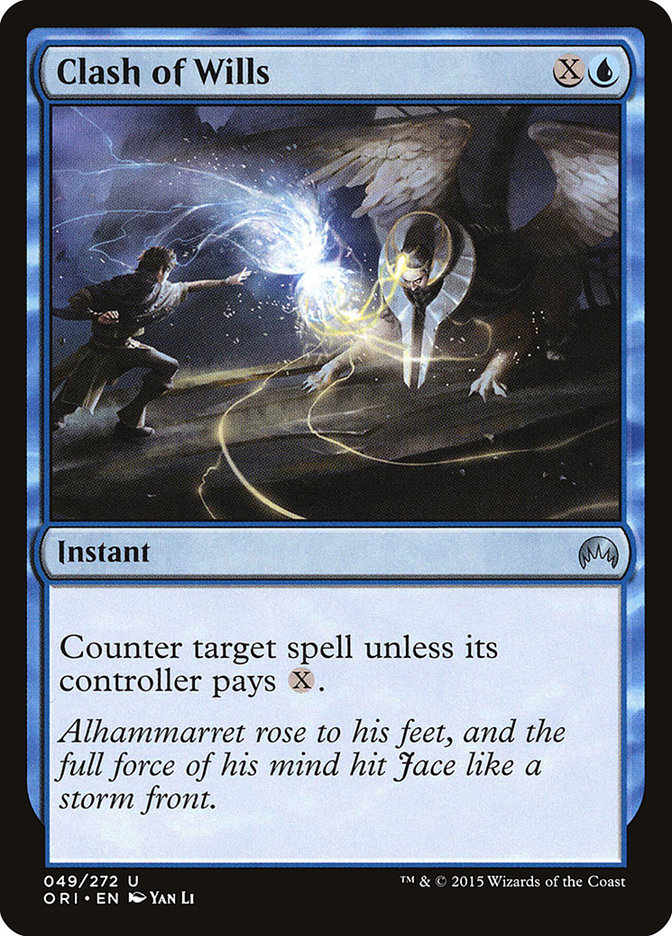Evaluating Magic cards without playing with them first is always delightfully challenging. A lot of what makes Magic fun is how often a card can surprise you, even when it feels like you already know so much. I think Magic Origins is a particularly tricky set with a lot of cards that go in very new directions. A lot of my first impressions, both for Constructed and for Limited, were wrong – and I think it’s likely valuable to explain why I thought what I did, why it was wrong, and what I think now. However, I need the important disclaimer that it’s still early, and I’m very likely just going to be wrong again about something here.
Lets start with the big one, the planeswalkers.
I currently think that I was totally wrong about Jace, Vyrn’s Prodigy. I was thinking of it as a Merfolk Looter, and evaluating that we didn’t really have mechanics that specifically need Merfolk Looter. The planeswalker seemed low-impact enough that it felt like I might rather just keep having a Looter. I was wrong on both fronts.
Standard is full of graveyard interactions. It’s most obviously great with Delve, but there are just so many cards it sets up – any of the Zombify effects, Returned to the Ranks, Ojutai’s Command, Alesha, Who Smiles at Death, Rally the Ancestors, Whip of Erebos, etc. It turns on Spell Mastery, and I’m sure it does a bunch of other things I haven’t considered in addition to looting. This is a great format for a Looter. On top of that, with so many ways in the format to mill yourself, the planeswalker is great for casting a key spell that you’ve built your deck around, like Rally the Ancestors.
I also just totally underrated casting a spell from your graveyard and still having a planeswalker around that threatens to do it again. You can cast two spells over the first three turns of having the planeswalker, and getting back any two cards from your graveyard is huge. I parsed that as slow, but when you’re using those spells to prolong the game you don’t need that many extras to keep prolonging it. Jace is great at buying time in order to get more Jace activations to get you more time, which makes it much better than I had thought. Also, the interaction with Dig Through Time in particular is just incredible.
Finally, while Jace’s ultimate isn’t the best ever, at least it’s a very real threat that demands serious respect in a control matchup.
Next up, Chandra, Fire of Kaladesh. I still don’t know how good Chandra is, but I’m a little more optimistic about it than I was. My concern was that I wouldn’t want to play a three-mana creature that didn’t do anything the turn it enters the battlefield, and I still mostly feel that way – however, while I’d previously thought it couldn’t have a home while Goblin Rabblemaster was in the format, I now realize that I was underestimating how much better it is against opposing creatures. Goblin Rabblemaster doesn’t get you anywhere on a stable board where your opponent has a creature that can block a token every turn, while Chandra easily gets you two damage a turn or so if you don’t want to flip her and you get an immediate burst of two extra damage when you flip it, or the ability to start killing creatures. I think this is an important sideboard tool for red decks that are looking to take a more controlling position against creature decks, and while Rabblemaster is not very strong against something like Elves, this card would be especially brutal there.
I’m unsure about Kytheon, Hero of Akros. The power level is obviously outstanding, but I still don’t know if it currently has a home in Standard. The lands in the format aren’t kind to decks that are trying to curve out playing creatures across different colors, and the sheer number of tokens and cards like Satyr Wayfinder make life very difficult for a 2/1. I wouldn’t be surprised if Kytheon ends up being the best card in Standard without a good home.
Thopter Spy Network is another card that kind of took me by surprise. I expected it to be mostly worse than Bident of Thassa, but I think comparing them really misses the point. Thopter Spy Network isn’t trying to be a Bident, it’s trying to be a Bitterblossom… except you don’t lose life, and it comes with a free personal Howling Mine. That card is absurdly powerful, and Thopters are actually well-positioned because competing control-deck endgame cards like Elspeth, Sun’s Champion, and Ugin the Spirit Dragon are weak against them. Of course, that won’t be true of all end-game cards; you will need a different plan against Dragonlord Atarka or Silumgar, the Drifting Death. The main thing holding Thopter Spy Network back is the shortage of playable artifacts in Standard, a problem to which there are very few solutions.
That said, the best of them is another card I initially slightly underrated that I think may end up being my favorite card in the set, Hangarback Walker. How can I not love this card? It’s like a Chronomaton strapped to a Doomed Traveler, except when this one powers up it makes additional Doomed Travelers. If that’s not good enough on the surface, it’s actually a little better than that when you think about how these things really work together. The problem with Doomed Traveler is that sometimes it’s too low-impact and your opponent can just ignore it, and when they ignore it, that text box is meaningless. With Hangarback Walker, they can’t just ignore it because it’s threatening to grow and take over the game, so they have to kill it as soon as possible – but then you get that value on the way out. Conversely, with Chronomaton the problem was that you’d invest a lot of time and mana into a creature, and then when you finally got around to trying to do something with it your opponent could just kill it and you’d have nothing to show for it – but Hangarback Walker is very much the opposite unless your opponent has just the right removal spell.
It can still be slow and low-impact against decks that go way over the top, like Green Devotion, but if you just pay attention to how you feel when your opponent casts it against you on turn two in Limited, you might realize that the impact of that card is high enough that it demands serious exploration in Constructed.
Woodland Bellower is a card I think I overrated. It still feels like you’re getting a lot of card for six mana, but I don’t think I really properly thought through the comparison to Genesis Hydra and the implication of Genesis Hydra’s resistance to counterspells. Woodland Bellower is fine, but I think it has no place in a Nykthos deck, and I think it often won’t be the right big spell before Standard rotates.
The Great Aurora is a card I just didn’t really parse until playing with it in Limited. It reads like “Pay nine mana: do some goofy nonsense” and that came with this subtext: “put this in your trade binder and hope someone who plays multiplayer wants it.” It’s possible that it’s too vulnerable to counterspells or the traditional problem that you might just not draw it or something, but it’s a hard reset that gets you out of any board and works in ways that can be pretty straightforward to abuse. Making tokens is great with it, putting extra lands onto the battlefield is great with it, and it can sometimes be hard to turn these things into real material gains so sometimes you can get a lot of them at a pretty low rate. The Great Aurora lets you do something with that, for example, just off the top of my head:
Creatures (23)
- 4 Elvish Visionary
- 4 Elvish Mystic
- 4 Courser of Kruphix
- 4 Satyr Wayfinder
- 3 Den Protector
- 4 Nissa, Vastwood Seer
Planeswalkers (3)
Lands (22)
Spells (12)

This isn’t tuned at all, but the plan is just to get permanents onto the battlefield as fast as possible. None of them are great, but that doesn’t really matter. You’re ramping very quickly, and you’re ramping with lands, so it’s resistant to sweepers and means you can flip Nissa, Vastwood Seer well ahead of time (turn one Elvish Mystic, turn two Nissa’s Pilgrimage, turn three Nissa’s Expedition, turn four Nissa, flip is an example of the fastest way to do it). If you play an Elspeth, Sun’s Champion the turn before you play The Great Aurora, you’ll likely draw enough cards by shuffling the six tokens in that you’ll be able have a flipped Nissa and an Elspeth before you opponent can get a creature onto the battlefield.
There are a few other cards I’ve grown to like a little more or a little less as I’ve played with them more in Standard, but I want to talk about Limited. First of all, I think the format is great. I was concerned at first that it might be a little too dependent on getting to play first, as that extra turn to get a renown creature can be a really big deal, and I also had a few earlier draft experiences where every game was determined by rares, but as I play with it more I see successful decks doing a lot of different kinds of things. I also see a lot of unsuccessful decks that lose because they just don’t know what they’re doing – they’re a random mix of cards along a mana curve rather than something like looks like a cohesive deck. I love when formats punish people who can’t figure out what their deck is doing, because it means there’s enough room to get a real edge by finding and pursuing a plan. Looking over the rares, while many are certainly powerful they’re nowhere near as oppressive as we’ve seen in the last few sets.
When I went to try to rank cards for Limited I found myself at a complete loss. I couldn’t rank cards within a color because it changed too much depending on what you were doing. I tried to look at color pairs, and that still didn’t work. By the time I tried to rank all the cards in Elves, and failed because it depended on which kind of Elves deck you were drafting I just gave up. Seriously, this format has multiple different ways to draft Elves that seriously change the rankings of most cards, and that’s not even an anomalous archetype; the same is true for W/B Enchantments or U/R Thopters.
Beyond that, this format just has a ton of cards that are just hard to evaluate, so I want to look at how my opinion on some of them has shifted.
Zendikar’s Roil is a great example. This is an aggressive set. Renown creatures are good and important, and they make blocking hard once they get through, and there are a lot of ways to push damage. I expected that Zendikar’s Roil would be way too slow. You need to draw six mana to make a 2/2, and seven to make two of them, and they come out slowly. This didn’t seem at all realistic. Then I watched a few games where it was on the battlefield and tried playing with it a few times, and last night I took one second pick. Remember earlier when I was talking about how I misevaluated Jace because I failed to process how Jace getting spells back could buy you time to use Jace more to get more spells back? Well, it turns out that when you’re making 2/2s, you can block with them to buy more time to draw more lands to make more 2/2s. Creatures in this set are relatively small, so as long as you’re not dying in the air Zendikar’s Roil can lock up the ground and take over in a hurry.
Shadows of the Past is similar. I expected it to be pretty bad. It’s a lot of mana to drain them, and you can’t even always do it, and it’s hard to evaluate how good it is to scry whenever a creature dies. It turns out that that card works similarly: scrying helps you find more action, which results in creatures trading more, which keeps the whole engine going and eventually you’ve substantially out-drawn your opponent. When you’ve had a gap for a turn, then it even gets to drain for two so at least you still do something.
The last card along the same theme that’s impressed me is Sigiled Starfish. I know some players loved this one the first time around, but I didn’t end up playing with it and it never seemed great to me. In this set, the 0/3 blocker is much better because it holds off early Renown creatures, while early Heroic creatures were very likely to just kill it. When it’s generally blocking and living, I’ve found it generates a really impressive amount of value, making it one of my favorite blue cards. It feels very hard to lose with a Starfish in your opening hand.
The cards that I’ve been most disappointed with are the counterspells, like Clash of Wills and Calculated Dismissal. It’s easy to be on the back foot, where having them is really bad, and while there is Negate and Bone to Ash the lack of something like Essence Scatter means that sometimes your opponent can just play around your situational countermagic until they can find opportunities to pay for them and they stop working.
In general, I just don’t want cards that are so overtly reactive in this format. While I’ve been impressed by cards that are good at grinding, like those discussed above, I’ve still felt like most of the time this is a very aggressive format that really rewards proactive decks, and I haven’t found counterspells to be a way that I’d want to position myself.
In conclusion, Magic’s great, Standard and Magic Origins Limited look great, and I’m medium at evaluating new cards, like most everyone else I’ve seen. The important thing, as always, is to remain flexible in your assessments and to position yourself to learn as fast as possible, but learn “soft” and fast, not hard and fast – keep your positions flexible, as even once you’ve learned something you may find that your understanding was incomplete and you may still need to unlearn it again and learn something else.


